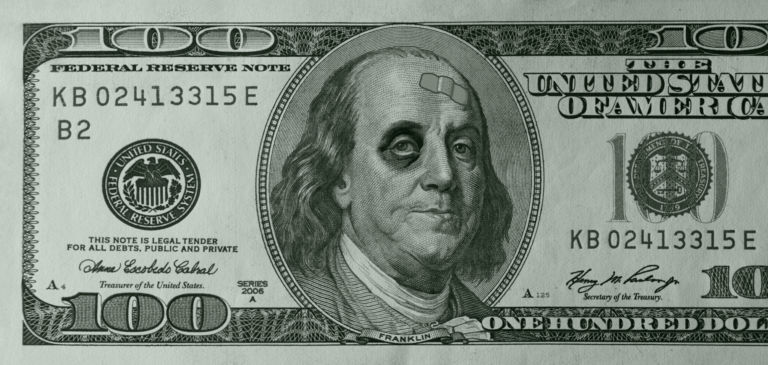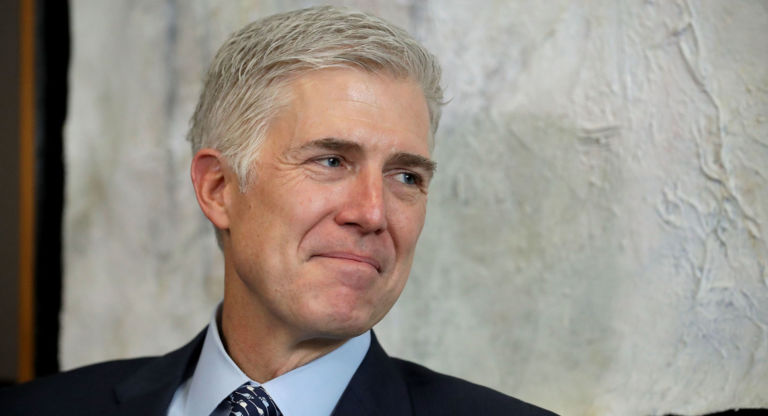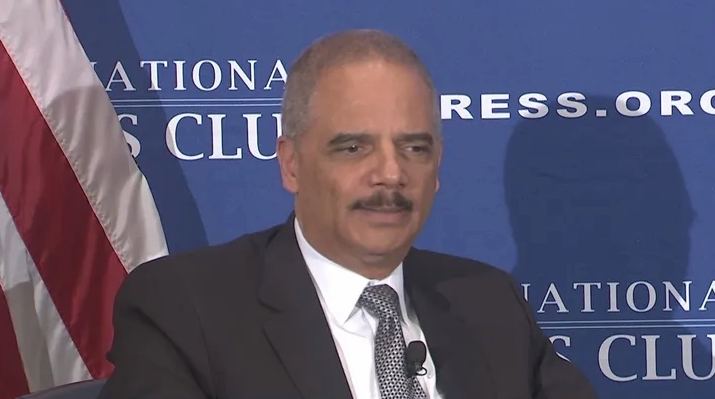1. Why Not a "Carbon" Tax
Lately there has been a great deal of discussion, even among conservatives and Republicans, about the possibility of implementing a carbon dioxide tax, incorrectly refereed to as a carbon tax. Of course carbon dioxide and carbon are quite different. But this is part of the manipulation of the language found in the global warming debate (incorrectly referred as climate change, another manipulation of the language).
There are many reasons for opposing a carbon dioxide tax, not the least of which is that such a tax, especially if imposed only by the US, would have no noticeable or even measurable impact on global temperatures during the lifetime of anyone currently living or even any of their children.
This short article by the Manhattan Institute’s Oran Cass points out that there is one group that, even if the tax will do nothing to impact the climate, will stand to benefit a great deal from the tax. This group is energy producers and especially, but not only, natural gas producers. And there is a second group who will stand to lose a great deal from the tax, namely the poor.
First, Cass points out that energy companies will not bear the burden of the tax. This is mainly because demand for energy is quite inelastic, and therefore most of the tax will be passed on to the final consumer. He notes that energy companies "don’t end up paying [the tax]. Most economists expect nearly the entire cost increase to be passed directly on to consumers through higher prices."
Second, he notes that many big energy producers will see their output increase, not decrease, under a CO2 tax, especially those that are heavily into the production of natural gas, which is a low CO2 alternative. As Cass states:
The biggest beneficiary of the damage would be natural gas, which emits less carbon dioxide and would thus face a lower tax. If higher oil prices push consumers away from gasoline and toward electric cars, the electricity for those cars can come from natural gas as well.
In other words, a CO2 tax is likely to end up subsidizing the same natural gas frackers that environmentalists despise.
So, not surprisingly, big energy wins while consumers take it on the chin. But among consumers, there is a division between those who only take it on the chin and those who also get hit with a barrage of body blows in the process. This second group is the poor.
Again in the words of Cass:
Perhaps the worst problem with a carbon tax is that it is extraordinarily regressive. Because poorer households spend a much greater share of their income on energy than do wealthier households, the price increases created by a tax eat up a greater share as well. Economists from the Brookings Institution and American Enterprise Institute found that a $15-per-ton carbon tax would cost the bottom 10 percent of households more than 3.5 percent of their income, and most taxes under consideration are two to three times higher. That’s the equivalent of a new income tax of 10 percent for the lowest-income households and 2 percent for the highest-income ones.
The bottom line with any carbon tax is that it will enhance the wealth of big energy companies, decrease economic growth, and negatively impact the wellbeing of all energy consumers while particularly harming the poor. And all this while having no impact on global temperatures. Other than that, it’s a great idea.
2. A dozen alarmist claims about climate change: responding with facts
Last week I attended the 10th International Conference on Climate Change sponsored by the Heartland Institute, which featured dozens of climate scientists and economists. The John Locke Foundation was proud to be a supporting co-sponsor of the conference, held in Washington, DC. Senator James Inhofe of Oklahoma, Chairman of the Environment and Public Works Committee, gave the kickoff keynote address. Below is a useful claim and response document handed out to the audience at the beginning of his talk and to which he made reference during his talk. Inhofe’s entire talk can be accessed here. Videos of all of the panels and keynotes can be accessed here.
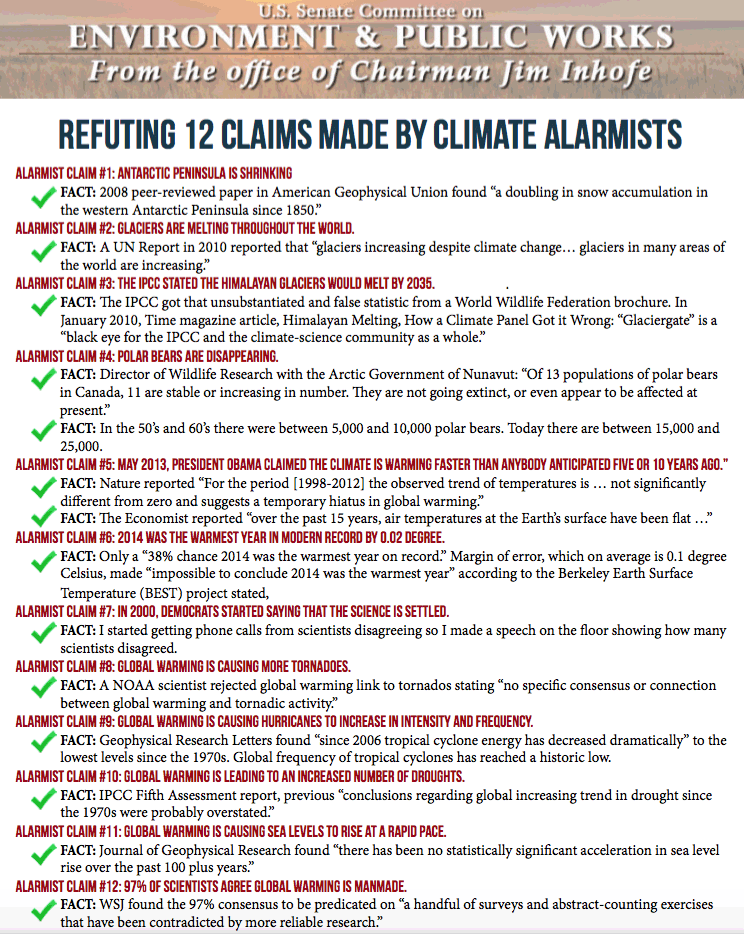
3. Ozone Report
The 2015 ozone season began on April 1 and, as I have been doing since this newsletter was started, each week during the ozone season this newsletter will report how many, if any, high ozone days have been experienced throughout the state during the previous week, where they were experienced, and how many have been recorded during the entire season to date. (Note: ground level ozone, which is what we are reporting on, is often called "smog.") According to current EPA standards a region or county experiences a high ozone day if a monitor in that area registers the amount of ozone in the air as 76 parts per billion (ppb) or greater. The official ozone season will end on October 31. All reported data is preliminary and issued by the North Carolina Division of Air Quality, which is part of the state’s Department of Environment and Natural Resources. Thus far this season there have been no high ozone days recorded on any of the state’s 42 monitors.
The table below shows all of North Carolina’s ozone monitors and the high reading on those monitors for each day of the 7-day period, June 8-14.
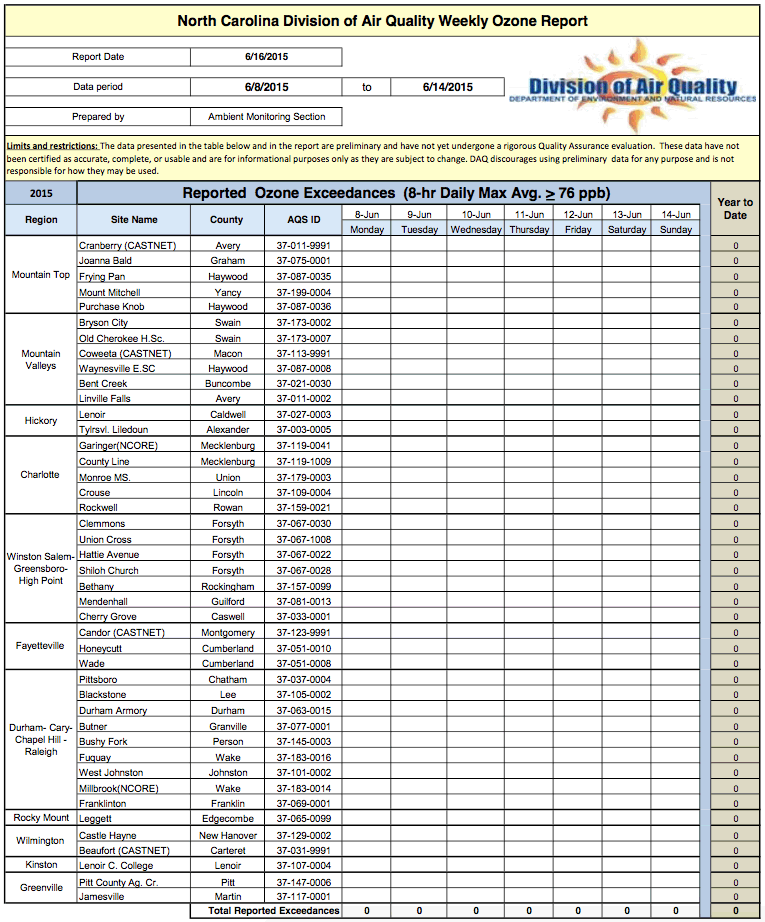
Click here for the Economics & Environment Update archive.
You can unsubscribe to this and all future e-mails from the John Locke Foundation by clicking the "Manage Subscriptions" button at the top of this newsletter.
